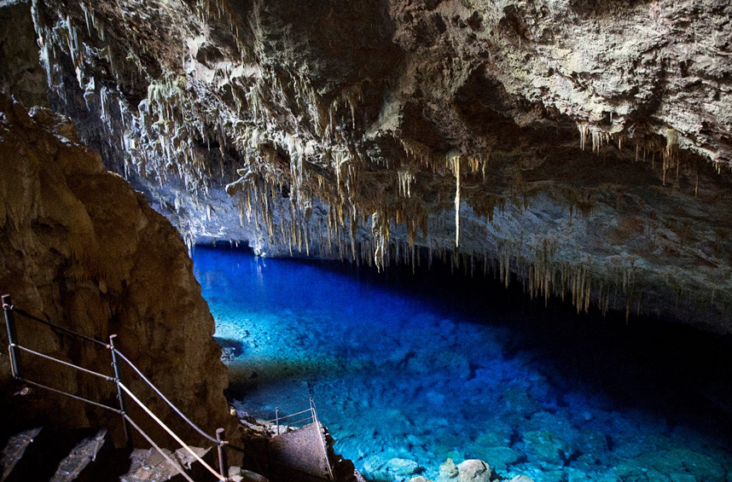Embratur Promotes Sustainable Destinations In Brazil

More people are looking for ecotourism in sustainable destinations than ever before, from locations to activities and hotels. Embraturaims to help promote the multiple destinations that strive to protect the environment and local communities through tourism and as a strategy to make them better places to live and visit.
The country presents one of the best options for those seeking a “greener” tourism. Not in vain, Brazil was highlighted last year as one of the countries that contribute the most to “green tourism” by the World Tourism Organization (UNWTO), in a report prepared in collaboration with the World Travel and Tourism Council (CMTV). for the G-20.
The Brazilian Agency for the International Promotion of Tourism, Embratur, promotes sustainable tourism both at an environmental and social level. “Sustainable tourism is a global trend that we have been watching closely, as Brazil is a pioneer in the segment. International tourists are increasingly willing to their footprint in the environment, even during their vacations, and that contribute to mitigating the effect of global warming. In our 55th anniversary, we wanted to take a more active role in promoting sustainable destinations inthe long-term and this is going to be one of our axes in the international tourism growth strategy for 2022”, assures Carlos Brito, president of Embratur.
The UAE has a direct route to São Paulo, departing from Dubai, with a total of 7 weekly flights by Emirates. From São Paulo, tourists can reach their final destination.
Mamirauá – Amazônia
The first Brazilian Sustainable Development Reserve, pioneer community-based ecotourism experience, is one of the greatest destinations in the Brazilian Amazon for wildlife. Located about 600 km west of Manaus and covering an area of 1,124,000 hectares, the place is internationally awarded for it sustainability results for biodiversity conservation. The conservation of nature and the use of a portion of natural resources is the basic objective of this sustainable development unit.
Tourism in the reserve is what is called “community tourism”. Unlike simple partnerships with local communities in need, which often have no lasting benefit for these families, tourism in Mamirauá is fully dedicated to the sustainable development of the region and its people.
The rainy season begins in April, when the forest is flooded, and activities are carried out in boats and canoes. From August to November is the dry season, when it is possible to go hiking and when there is a greater concentration of fish and birds in the region.
How to get there:
The reserve is in the city of Tefé. It has a Regional Airport (TFF), the easiest way to reach Mamirauá, deep in the Amazon. The lodge located in the reserve has a transfer servicefromTefé, where it picks up its guests, taking them to the city’s port, from where speedboats depart for the inn. On a one-hour trip up a river, which, upon arrival, provides an incredible and indescribable experience.

Lodge in the Mamirauá Sustainable Development Reserve
Bonito – Mato Grosso do Sul
Bonito is exemplary in solving one of the biggest problems in tourism today: “overturning”. The public authorities thought ahead of its time and sought solutions before problems were installed irreversibly or with unmanageable impacts. As tourists began to come, several concerns arose: there was concern that unregulated tourism could affect the environment. Therefore, Bonito has a voucher system to control the number of visitors which gave to the city the World Responsible Tourism Awards, in London, during the World Travel Market.
With crystal clear waters where you can go diving and relax while being surrounded by incredible nature and thousands of fish, it’s no wonder Bonito is considered one of the best ecotourism destinations of Brazil.
The destination has waterfalls with crystalline waters, of different sizes and shapes, each one with unique details that enchant and connect to nature. Natural pools, sculpted by the water, serve an incredible backdrop, as in the Rios da Pratawaterfall.

Rios da Prata waterfall in Bonito
The local habitat is composed of numerous bird species such as harpy eagles, macaws, toucans and of other animals such as anteaters, armadillos, cougars, maned wolves, deer and foxes.The town and surrounding area offer a huge selection of adventure activities such as hikes, swims under waterfalls, caving, snorkelling, rafting, horseback riding, scuba diving, mountain biking and more. Bonito’s natural wonders are a result of its limestone karst geology.
Over millions of years, rainwater has eroded the area’s rock, creating sinkholes and caves, allowing visitors to bathe waterfalls and explore grottos in a part of Brazil which mixesCerrado and Atlantic Forest biomes.The Gruta do Lago Azul is one of the symbols of Bonito. After descending the steps, walking along stalactites, you arrive at the famous blue lake. Its bluish colour is unique, a phenomenon that only happens between December and January, in the morning, when the sun shines directly on the lake, making its colour even more intense and ecstatic.
How to get there:
The city has a Regional Airport (BYO) and is 300 km from the Campo Grande International Airport (CGR). If visitors want to depart from Campo Grande, it is possible to use a rental car, bus or transfers to reach Bonito.



